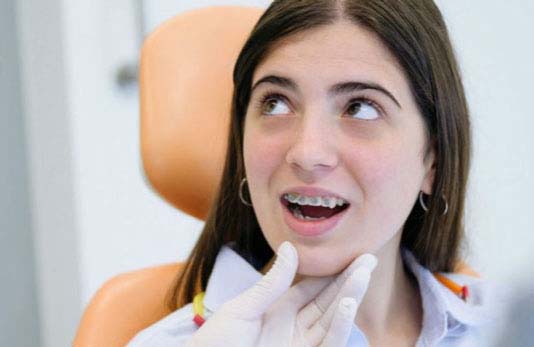Teens and dental opioids
What to know about this growing concern

Every day, an average of 38 Americans die from prescription opioid overdoses, according to the Centers for Disease Control and Prevention (CDC). The growing opioid crisis has raised awareness that addiction can start with prescription drugs just as easily as illegal ones.
For many teens, the first time they receive a prescription for opioids is at the dentist.
Here’s a closer look at the role of dentists in the opioid crisis and what you can do to protect your child.
Why are teens at risk for addiction?
Part of the reason teens are at higher risk of opioid abuse is biological. The brains of teenagers are still growing and developing. In teens, the part of the brain that seeks pleasure and rewards (known as the nucleus accumbens) is fully developed. Unfortunately, the part of the brain responsible for judgment and impulse control (the prefrontal cortex) don't fully develop until the early to mid-20s. That means the physical pleasure from using opioids is likely to be felt more strongly than the rational desire to avoid addiction.
Compared to other age groups, teens also received the strongest dosage of opioids. Legitimate opioid use (such as taking prescribed drugs after wisdom tooth removal) makes teens 33% more likely to abuse opioids later on, according to a 2015 study in the journal Pediatrics.
When do dentists prescribe opioids?
Over two-thirds of opioids prescribed by dentists are related to dental surgery, according to the 2018 study. Opioids are commonly prescribed following:
- Wisdom tooth removal
- Root canal treatment
- Root end surgery (apicoectomy)
- Bone grafts
- Gum surgery
Among teens, wisdom tooth removal is the most common dental procedure that can lead to an opioid prescription.
Do teens need opioids for dental pain?
Compared to their peers around the world, teens in the United States are much more likely to be prescribed opioids after wisdom tooth extraction. Many American teens leave their dentist’s office with a prescription for hydrocodone, also known as Vicodin or Norco. Almost all of this drug’s supply worldwide — 99% — is prescribed and used in the U.S. In other countries, including England, Japan and China, opioids are rarely prescribed after wisdom tooth surgery.
The first line of treatment for dental pain should be over-the-counter painkillers, according to the American Dental Association. The organization recommends dentists prescribe a combination of ibuprofen (such as Advil) and acetaminophen (also known as paracetamol or Tylenol).
Not only are these painkillers not habit-forming, they’re also effective in treating post-surgery pain.
In fact, a 200 mg dose of ibuprofen with 500 mg of acetaminophen is more effective than any other combination of drugs, including opioids, according to a 2013 study in the Journal of the American Dental Association.
What can parents do?
- Review your child’s prescriptions. Understand the difference between opioid and non-opioid medications.
- Discuss with your child’s dentist whether opioids are the appropriate treatment for your child’s dental pain. Ask about non-opioid alternatives, such as ibuprofen and acetaminophen.
- Keep track of your child’s medication. If your child is prescribed opioids, dispense the tablets as prescribed and drop off any remaining medication at your local pharmacy for proper disposal. Most teens have tablets left over after recovering from wisdom tooth removal. When these pills aren’t disposed of correctly, they can be misused by your teen, family members or friends.
- Start an open conversation. Talk to your children about the risks of opioid addiction and let them know they can turn to you without fear of judgment if they have experienced or witnessed drug misuse.
What can dentists do?
Dentists play an important role in preventing opioid abuse. Like physicians, dentists should follow the guidelines for opioid prescription established by the CDC, such as:
- Be conservative prescribing opioids. This means prescribing the lowest effective dose for each patient, with no more tablets than necessary, and only for acute pain.
- Check whether the patient has already received an opioid prescription from another dentist or physician. State prescription databases can provide this information.
- Intervene if a patient may be misusing opioids and communicate the risks of addiction before writing a prescription for opioids.
Last updated March 17, 2022
Related articles:
The oral health information on this website is intended for educational purposes only. Always consult a licensed dentist or other qualified health care professional for any questions concerning your oral health.


